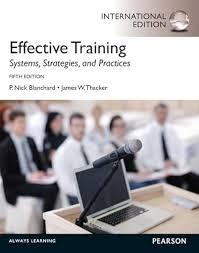Use the following to see how expectancy theory explains differences in student motivation. a. In a small
Question:
Use the following to see how expectancy theory explains differences in student motivation.
a. In a small group, discuss the most important outcome that you want to achieve in this class (it may or may not be a letter grade). Have each person indicate how valuable that outcome is by using a scale from 1 = “not at all desirable” to 10 = “extremely desirable.”
b. Ask a group member to describe the most important outcome; then ask that person to describe how strong that motivation is compared with the other goals for this term (use a scale of 1 = “not at all motivated”
to 10 = “extremely motivated”).
c. Ask that same person to describe the things that must be done (performance level) to achieve that outcome.
d. Ask the person to indicate the Expectancy 1 level (the belief that she will reach the performance level). Then ask the person to describe Expectancy 2 (the likelihood that successful performance will result in the outcome). Use probabilities
(e.g., 1 = “very unlikely,” .5 = “50%
chance of happening,” and .9 = “very likely”) to reflect expectancies.
e. Now examine the expectancy linkages to see how well they conform to the person’s level of motivation. Discuss any discrepancies and why they exist.
Step by Step Answer:

Effective Training Systems, Strategies, And Practices
ISBN: 9780133129915
5th Edition
Authors: Nick P Blanchard, James Thacker





